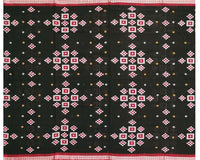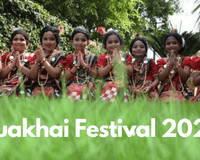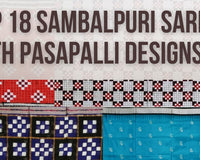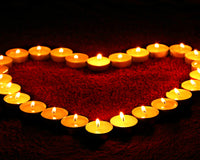
Boudh District (also called Bauda District ) is an administrative district of Odisha state in eastern India. The city of Boudh is the district headquarters.
The early history of Boudh is still in obscurity. However, the discovery of remarkable Buddhist statues from Boudh led some scholars to believe that Boudh was an important Buddhist centre of Orissa. From the epigraphic records it is known that in the middle of the 8th century AD, Boudh region was under the occupation of the Bhanja rulers and was a part of Khinjali Mandala. The earliest known ruler of this Bhanja family was Nettabhanja who was ruling over the Dhenkanal region as an independent ruler, but his successor migrated towards Boudh-Sonepur region and established Khinjali Mandala and ruled there as the feudatory of the Bhauma Karas of Tosali. The Sonepur Copper Plate of Satrubhanja Dev, son of Silabhanja mentions the name Khinjali Mandala for the first time and on this basis, it is believed that Silabhanja Dev was the founder of Bhanja Kula of Khinjali Mandala. Their capital was Dhirtipura, which has been identified with Boudh town. Satrubhanja Dev – II, a ruler of this family was defeated and killed by the Somavansi ruler of South Kosala, Janmeyjaya – I. The Bhanja’s were driven out from the Boudh region which was renamed as Odra Desa. Yayati – I, the son and successor of Janmejaya – I established his capital in Odradesa at Yayatinagara, which has been identified with modern Jagati in Boudh District. The Somavansi then occupied and migrated towards Utkala leaving their original homeland South-Kosala in charge of viceroys.
Transport:-
Boudh is well connected by road and rail with other district headquarters and the state capital Bhubaneswar. The distance of Boudh from Bhubaneswar is 240 km. One can come to Boudh via State Highway No. 1 and 14 ( via Nayagarh –Charichhak) or can come by National Highway No. 42. ( via- Angul).Regular train services are available from Bhubaneswar viz. Bhubaneswar –Sambalpur Intercity Express, Hirakud Express, Puri-Sambalpur passenger train. To reach Boudh one has to get down at Rairakhol station. From here one has to travel around 27 km. either by Bus or taxi to reach Boudh. The nearest Airport is at Bhubaneswar.
Culture:-
Boudh is a new district but the civilization of Boudh area is as old as the oldest river valley civilizations of the world. As all civilization started on the banks of river and riverine passage was the mode of transport in the days of yore, people of Boudh claimed to be inheritors of rich culture. From 2nd century AD up to a period of one thousand years Boudh was an important seat of Buddhism, Shaivism and Shakti cult in the country. Boudh is part of Kosali Culture. It was highly developed educationally and culturally during the Soma Vanshi period and also during the Gangas and Surya Vanshi period.
Communal Dance
Various types of dances are prevalent in the district. these are usually held during socio-religious functions. An account of some of the major dances are given below.
Karma Dance
The Karma dance of Boudh is quite different from the Karama dance of the Oraons of Sundergarh District. In Boudh, the Ghasis perform this festival and dance. They observe Sana Karama festival on the 11 th day of the dark fortnight in the month of Bhadrab ( August- September) and Karama festival on the 11 th day of the bright fortnight of the same month . On both the occasions, males and females belonging to Ghasi community perform the Karama dance. The girls sing Karama songs and the boy play on the Mrudunga and Madala. They generally sing songs relating to goddess Karama whom they worship on the occasion .
Danda Nata
Danda Nata is a ritual dance and is very popular in Boudh. The participants of the dance are the devotees of god Hara and goddess Parvati. They perform the dance in the month of Chaitra (March–April) and Vaishakha ( April–May).
Dalkhai Dance
The people of Boudh perform this dance during the month of Aswina ( September –October ) on the occasion of Bhaijuntia ( Bhatri Dwitya) In this dance young girls stand in a line or in a semi-circular pattern with songs known as Dalkhai songs.
Fairs and Festivals
The Hindus of the district observe a number of festivals all the year round. These festivals may broadly be divided into two categories, viz. domestic festivals observed in each household and public festivals and fairs where people congregate in large numbers on some auspicious days. The domestic festivals are confined tom worship of family deities, observance of ekadashis, various vratas, etc. most of them being guided by phases of the moon. The public festivals are usually religious ceremonies attended by a large number of men, women and children who come for worship as well as entertainment. An account of some of the important festivals in the district is given below.
Chuda Khai Jatra
This function is observed in the last Friday of Margasira(November–December) wherein both males and females gather in a place and scold each other in filthy languages and also fight each other. The conception behind this is that by such function the land will yield good crops.
Ratha Jatra
The Ratha Jatra or Car Festival of Lord Jagannath is held on the second day of the bright fortnight in the month of Asadha ( June–July). The festival is observed at different places of Boudh, but the festival observed in the Boudh town deserves special mention. During this festivals people of this district wear new dresses and make delicious food. Thousand of people from nearby villages of the district congregate at Boudh for this occasion. The Raja of Boudh performs the ritual as in case of Ratha Jatra of Puri. . The three deities – Lord Jagannath, Balabhadra and Subhadra are taken in a car from main temple to the Mausima temple. The deities stay their for seven days. During this time different types melas, mina bazaar are organised at Boudh as large numbers of people come to Boudh.
Laxmi Puja
Laxmi Puja is observed in almost all Hindu households on every Thursday in the month of Margasira( November–December). The Hindu women celebrate this festival with great austerity and devotion. On the Thursdays, the house and the courtyard are decorated with chita or alpana designs, and Laxmi, the goddess of wealth and prosperity, is evoked and worshipped. The last Thursday of the month marks the end of the Puja when rice cakes and other preparations of sweets are offered to the goddess.
Nuakhai
Nuakhai is an agricultural festival. It is observed more or less in all parts of the district. This ceremony generally takes place in the bright fortnight of Bhadraba ( August –September ) on an auspicious day fixed by the astrologer. On this occasion preparations of the new rice are offered to gods, goddesses and ancestors after which members of the family along with friends and relatives partake of the new rice. The head of the family officiates in this function.
Sivaratri
Sivaratri festival is observed in all Siva temples on the 14th day of the dark fortnight in the month of Phalguna ( February–March). The devotees remain awake throughout the night and worship Lord Siva. At midnight a lamp called Mahadipa is taken to the top of the temple and is kept burning throughout the night. The devotees break their fast after seeing the Mahadipa. This festival is observed with great pomp and splendour in the Siva temple of Boudh town namely Matengeswar, Chandrachuda, Mallisahi, and at Jagati, Karadi, Sarsara, Dapala, Bhejigora, and Raniganj.
Dasahara
The Durga Puja and Dasahara festivals are celebrated during the bright fortnight in the month of Aswina ( September–October). Generally, this Puja continues for four days from Saptami up to Dasami. The images of goddess Durga are worshipped in a few places in the district of which celebrations held at Boudh town and at Sakta shrine of Purunakatak deserve special mention.
Dasahara has a special significance to the warrior caste. They worship their old weapons of war and exhibit physical feats on the occasion. Their heroic forebears used to start on fresh military expeditions during this season of the year.
Dola Jatra
Dola Jatra is usually celebrated from the day of Phagu Dasami to Phagu Purnima. In some places, it is observed from the next day of Phagu Purnima to Chaitra Krishna Panchami. On this occasion the images of Radha and Krishna are placed in a decorated biman and carried in procession to the accompaniment of music. At places, the bimans carrying Radha-Krishna images from different places assemble together for a community worship. This assembly of the gods called melan is usually celebrated with great pomp and show. This is the main festival of the people belonging to the Gaura caste. They worship the cow and play naudi( a play with sticks) by singing songs relating to Radha and Krishna.
Puajiuntia and Bhaijiuntia
The Puajintuia ceremony is celebrated on the 8th day of the dark fortnight in the month of Aswina ( September- October). On this occasion almost all the mothers worship the deity Dutibahana for long life and prosperity of their sons.
On the 8th day of the bright fortnight of Aswina ( September–October), Bhaijiuntia is observed. The sisters worship goddess Durga on this occasion for the long and happy life of their brothers
Ramaleela
Ramanavami or Ramaleela celebration is celebrated during the month of Chaitra. It is observed for eight to thirty days at different temples of Rama. It is a dance drama in open theatre for the entertainment people during which seven parts of the epic Ramayana is being played by different artists in different nights. It is observed with great pomp and show in Raghunath temple at Boudh town for eighteen days. It is also observed with religious fervor at Raghunath Jew temple of Debgarh and in the village Bahira.
Kailashi Jatra
Kailashi or Kalashi Jatra is observed on the 11 th day of bright fortnight of Kartika which is also an auspicious month for Hindu. It is observed in the kalashi kothi ( worshipping place).The walls of the kalashi kothi is painted with different god and goddess .A special type of musical instrument called Dhunkel is being played during this occasion inside the worshipping place. Girasinga is famous for this festival in the district. It is also observed in Palas, Landibandha, gandhinagar Khuntbandha, gundulia, Sarsara, Samapaju, Sidhapur, Khaligaon, Ramgad and Khaliabagicha of Boudh town.
Christian festivals
The Christians of the district observe New Year’s day, Good Friday, Easter Saturday, Easter Sunday, Easter Monday, Christmas Eve and Christmas Day with great pomp and show.
Muslim festivals
The Muslim inhabitants celebrate Id-Ul-Fitr, Id-Ul-Zuha, Shab-E-Barat, Shab-E-Quadar, Juma-Tul-Wida, Muharram, Shab-E-Meraj, Milad-Un-Nabi, and Ramzan like their fellow brethren in other parts of the state.
Tourism:-
Boudh is famous for its century old aesthetically built temples, ancient Buddha statues and caves. With the spread of Saivism, Vaishnavism and a number of other cults numerous shrines dedicated to various deities were found in this region. The natural beauty and glamour of these places keep the visitors spellbound. It is a paradise for devotees and nature lovers. One who has visited this district at least once in his life never forgets it.
Some of the places of tourist attraction are as follows.
Ramnath:

A group of three temples of Siva at Boudh town called the Rameswar or Ramanath temples, dating back to the 9th century A.D. are reputed for their special feature.
The decorative motifs and the plastic art of three temples at Boudh are certainly superior to and older than the great lingaraj-Ananta –Vasudeva group. One particular feature of the Ramanath temple is worth particular attention. Their plan is quite different from any other temples.
Jagati :

Jagati is situated at a distance of 16 Km. from Boudh . Near the village at Gandhradi, is situated the famous twin temples of Nilamadhava and Sidheswar.
These temples were constructed under the patronage of the Bhanja rulers of Khinjali mandala in 9th century A.D. These two temples were built on one platform which are exactly similar to each other. The one on the left hand is dedicated to Siva named Siddheswar and its sikhara is surmounted by a Sivalinga.The second is dedicated to Vishnu , named Nilamadhava and its sikhara is surmounted by a wheel of blue chlorite.
Rameswar or Ramanath temples:
Rameswar or Ramanath temples, dating back to the 9th century A.D. The decorative motifs and the plastic art of three temples at Boudh are certainly superior to and older than the great Lingaraja -Ananta -Vasudeva group. Their plan is quite different from any other temples. In plan, these temples are eight-rayed stars and the Argha-Pattas of the Lingas are also similar. These magnificent temples were built of red sandstone and profusely carved. The temples with rich texture and curved surfaces are strikingly noteworthy.
This is the palace of ex-Ruler of Boudh locally known as Rajabati. This was constructed during the reign of Raja Jogindra Dev ,who was benevolent and generous ruler. The palace is a picturesque and handsome building commanding a fine view of Mahanadi.

Jogindra Villa Palace is the palace of ex-Ruler of Boudh locally known as Rajabati. This was constructed during the reign of Raja Jogindra Dev, who a generous ruler. The palace is a picturesque and a strong building commanding a fine view of Mahanadi.
Hanuman Temple
This temple is situated in the midst of the river Mahanadi to the east of Boudh town. The Hanuman temple was constructed by a religious mendicant. This shrine was constructed on a large stone. The temple commands a beautiful view, especially during rain when the Mahanadi is in full boom.
Chandra Chuda and Matengeswar Temple
The Chandra Chuda and Matengeswar temple are situated on the bank of river Mahanadi in Boudh town. Both the temples are Shiva temples. In the Matengeswar temple, there is also a separate temple for goddess Parvati.
Bhairavi and Madan Mohan temple
Both these temples are built nearby the palace of the ex-ruler of Boudh. In Bhairavi temple goddess Bhairavi has been worshipped. In Madan Mohan temples idol of Radha-Krishna has been worshipped. One gayatri pragnya Mandir is also situated at the adjacent to these temples.
Jagannath temple
This is one of the ancient temples of Orissa. It is situated at the heart of Boudh town. Here Ratha Jatra is celebrated with great pomp and show.
Economy:-
In 2006 the Ministry of Panchayati Raj named Boudh one of the country's 250 most backwards districts (out of a total of 640).[1] It is one of the 19 districts in Orissa currently receiving funds from the Backwards Regions Grant Fund Programme (BRGF).
References:-
1:-https://en.wikipedia.org/wiki/Boudh
2:-https://en.wikipedia.org/wiki/Boudh_district
3:-http://www.nuaodisha.com/Odisha-Tourism/Tourist-Places-In-Boudh.htm






